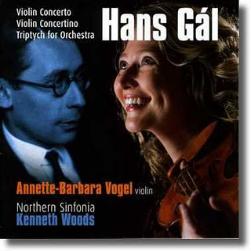Hans Gal takes Texas by storm!

Published today in the Dallas Morning news: a joint review of two discs featuring the orchestral music of Hans Gal. Last year’s recording of the Gal Violin Concerto, Concertino for Violin and Strings and Triptych for Orchestra with Northern Sinfonia is listened to alongside the new disc of Gal and Schumann’s 3rd Symphonies with Orchestra of the Swan.
Classical CD review: ‘Lost’ Austrian composer brought to life
By Scott Cantrell
Classical Music Critic
Published 30 July 2011 10:34 PM
Hans Gál (1890-1987) was yet another of those Austro-German composers whose successful careers were sidetracked by the rise of Nazism. Like Korngold, Gál remained true to a populist post-romanticism, with some neoclassical seasonings. His was, as Conrad Wilson wrote in The New Grove Dictionary, “a tireless flow of classically constructed, glowing-toned pieces, finely crafted, courteous, orderly, and unhurried in their musical discourse.”
Growing up amid the yeasty intellectual and artistic culture of early 20th-century Vienna, Gál studied under two eminent teachers: Eusebius Mandyczewski, a close friend of Brahms, and Guido Adler. He went on to teach at the New Vienna Conservatory and become director of the Mainz Conservatory in Germany. His music, which included five operas, four symphonies and other orchestral works and large bodies of chamber and choral music, was widely performed, especially in Germany.
With the rise of Hitler, the Jewish composer was dismissed from the Mainz job. After briefly returning to Vienna he fled to Scotland, becoming a lecturer at Edinburgh University. He continued to compose virtually to the end of his long life, edited a new edition of Brahms’ music and wrote books on Brahms, Wagner, Schubert and Verdi.
The two works for violin and orchestra recorded here — the 1933 Concerto for “small orchestra,” the 1939 Concertino for string orchestra — belong in the company of the popular Korngold and Barber violin concertos. Straussian lyricism, harmonic succulence and occasional playfulness are spelled by contrapuntal patches that suggest the influence of Hindemith.
The 1952 Third Symphony and 1970 Triptych flex some muscles, but they also make room for delicious nostalgia and easy enjoyment. This is not perhaps the most distinctive music, but it certainly gives pleasure. (To learn more about the composer, check out the website www.hansgal.com.)
The two British orchestras on these CDs wouldn’t be mistaken for the Vienna Philharmonic, but American conductor Kenneth Woods leads performances both authoritative and generously expressive. His Schumann Rhenish is quite sympathetic, too; the brasses aren’t the most polished, but unlike too many conductors Woods keeps the middle movements mobile. Annette-Barbara Vogel is an accomplished soloist in the violin works. Sonics are OK, if not the last word in transparency.
Gál
Violin Concerto; Violin Concertino; Triptych for Orchestra. Vogel, Northern Sinfonia, Woods (Avie)
Symphony No. 3 (with Schumann Symphony No. 3, Rhenish). Orchestra of the Swan, Woods (Avie)

Interestingly, Hindemith was actually younger than Gal, so one could legitimately ask the question of who influenced who in this case. Gal was born in 1890, Hindemith in 1895 (Hindemith died in 1963, Gal in 1987). Korngold, who is also often compared to Gal, and sometimes mentioned as an influence was born in 1897. Korngold’s wonderful Violin Concerto was written in 1945, Gal’s two concertos were written in 1932 (Concerto) and 1939 (Concertino). The Barber Violin Concerto, also mentioned in the review above, was completed in 1939.